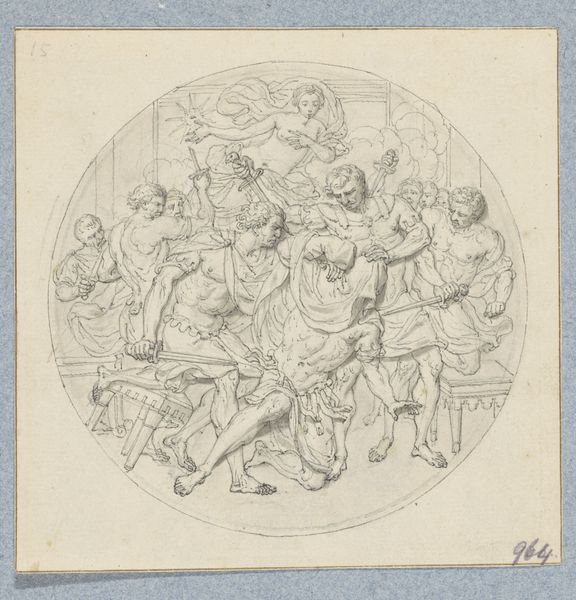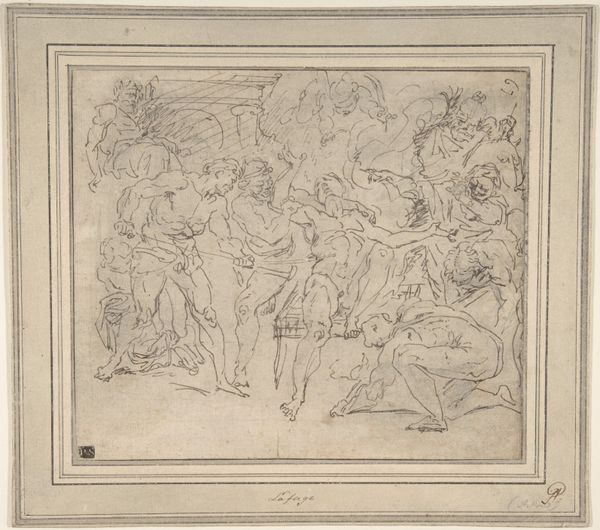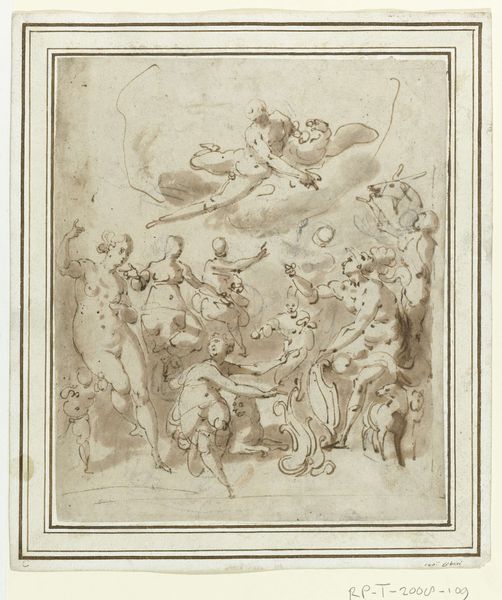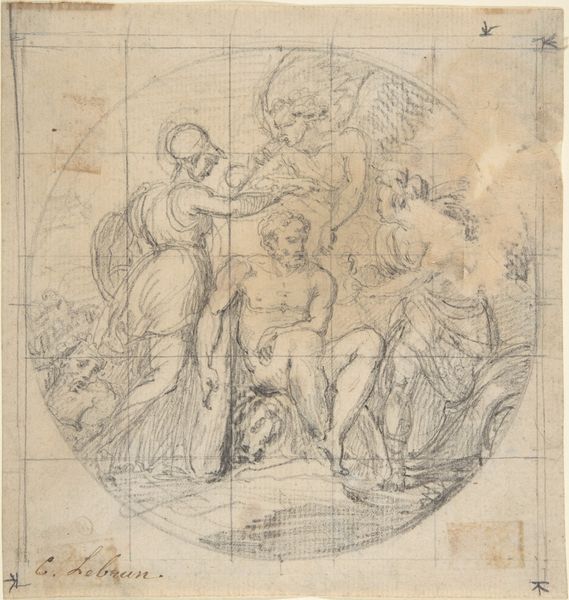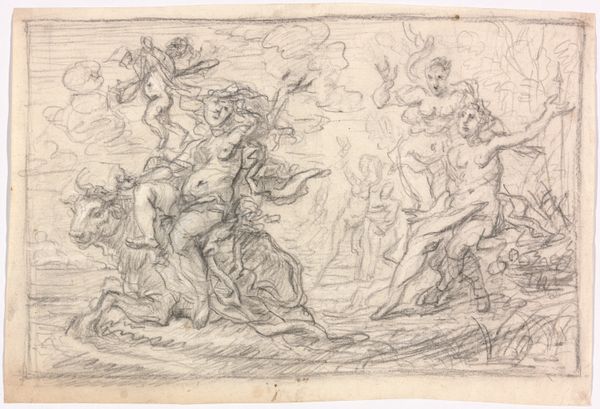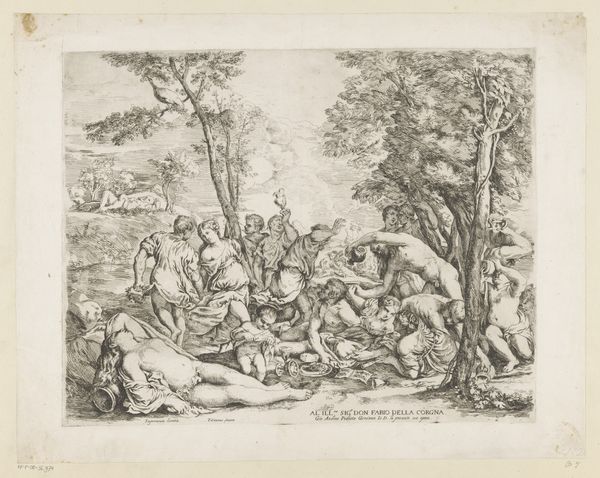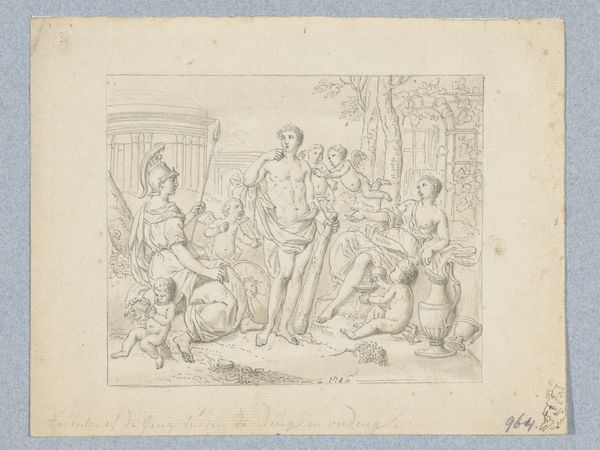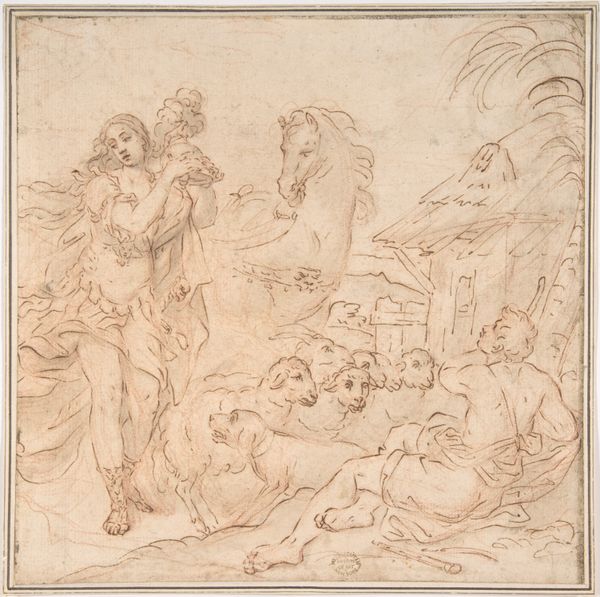
Hymenaeus, door eroten voortgetrokken, verdrijft Eigenbaat en passeert de Afgunst (in doos met 43 tekeningen) 1703 - 1775
0:00
0:00
drawing, paper, ink
#
drawing
#
allegory
#
baroque
#
classical-realism
#
figuration
#
paper
#
ink
Dimensions: height 148 mm, width 147 mm
Copyright: Rijks Museum: Open Domain
Curator: Here we have a drawing entitled "Hymenaeus, door eroten voortgetrokken, verdrijft Eigenbaat en passeert de Afgunst" which translates to "Hymenaeus, Drawn by Erotes, Drives out Self-Interest and Passes Envy" attributed to Louis Fabritius Dubourg. It likely dates sometime between 1703 and 1775. Editor: What immediately strikes me is the composition—a tightly packed, almost dizzying array of figures contained within this circular frame. It gives it an overwhelming sense of classical dynamism, doesn't it? Curator: It’s very typical of the Baroque era, relying heavily on allegory to communicate its message. You can see how marriage, represented by Hymenaeus, is presented as triumphant, overcoming vices like self-interest and envy. It's propaganda in a way, promoting the societal benefits of marriage. Editor: Indeed. Note the medium: delicate lines of ink on paper. Despite the static nature of drawing, Dubourg has achieved a tremendous sense of movement. Hymenaeus seems to stride right out of the scene, almost propelled by those flanking cherubic figures. And is that Envy being literally driven away in the lower right corner? Curator: Exactly! That illustrates the didactic function art served back then. It wasn’t just about aesthetic pleasure, but about instilling moral values and reinforcing the social order. It’s a drawing with intent, to make people see and aspire to specific virtues within a very hierarchical society. Editor: And the semiotics—a torch to represent enlightenment, wreaths as symbols of celebratory tradition...all work together. I find the circle to be really interesting, acting like a lens magnifying these concepts to focus one’s gaze and mind. The formal constraints almost add energy. Curator: Well said. It is also fascinating to view drawings in collections as records of practice; this was just one in a box of over forty sketches. Editor: That's insightful, it contextualizes our reading of this image, I agree. A compelling snapshot from a world attempting to visualize and reinforce its beliefs through art. Curator: Yes, it's a look at the period’s moral architecture, made manifest in visual form.
Comments
No comments
Be the first to comment and join the conversation on the ultimate creative platform.
